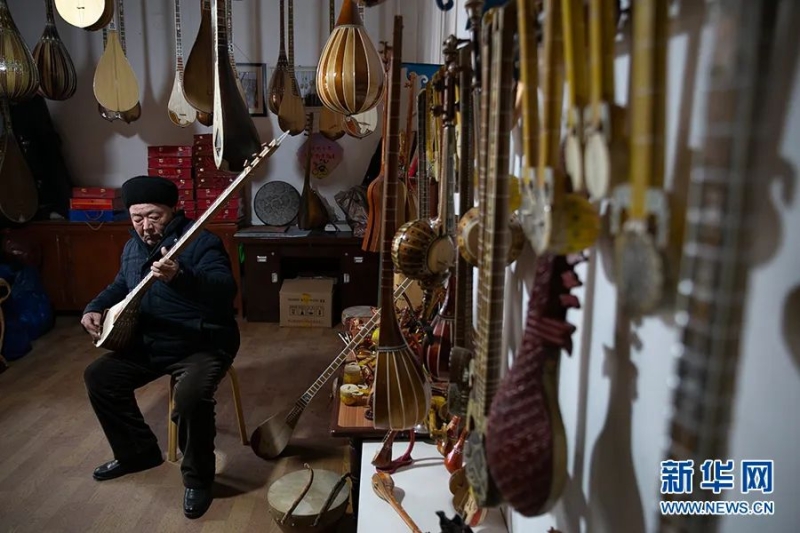Narrator: Aiyit Yimin, the representative trustee of Uygur musical instrument production skills, a national intangible cultural heritage
Satar is a traditional Uygur musical instrument. Its upper part is slender and its lower part looks like a gourd ladle. And the whole Satar is like a hairpin. It is made of mulberry wood, and its sound is pleasant and bright.
My family has been the musical instrument craftsman for three generations. And I began to learn the skills at the age of 15.

Aiyit Yimin's home is full of various musical instruments, like a musical instrument "museum". (Xinhua/Rusitan)
Making a good Satar needs a craftsman to pay attention to every process and detail, including wood selection, body, neck and front making, polishing, strings installation, painting and decoration.
The best material for Satar is female mulberry tree over 80 years old with smooth grain and uniform density. The older the tree is, the stronger and more durable the instrument will be. Especially for the body, it should be made of a whole section of mulberry wood, taken from the main trunk of a mulberry tree within two meters from the root, and each section is 50 to 60 cm long.
When it comes to the making of a Satar’s body, it's really “the precipitation of time”. Mulberry wood should be dried naturally and stored in the shade for 20 to 30 years. During the production process, it needs suspension several times to wait for the wood to dry thoroughly, otherwise it will crack easily. I use a homemade machete to hollow mulberry wood, and polish them to a thickness of 2 to 3 mm. Too thin or too thick, it will affect the timbre of the Satar.
In all the steps of making a Satar, the body decoration is the most tedious. A 140 cm long Satar needs thousands of decorative patterns, which can't be accomplished without patience. My wife and I cut the decorative pieces one by one, and then stick them to the body one by one, and make snake, ears of wheat and jagged patterns favored by local people. Nowadays, most craftsmen use machines to carve patterns, but I am still used to doing it by hand, which takes more time and effort, but gives the Satar an extra charm.
Whenever there are guests from far away, I will take out the Satar and play a song for them. Nowadays, young guys in the village have inherited my craft and play a new melody of common prosperity.
Guangming Daily reporters Shang Jie and Wang Yizhao









